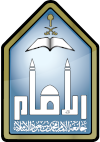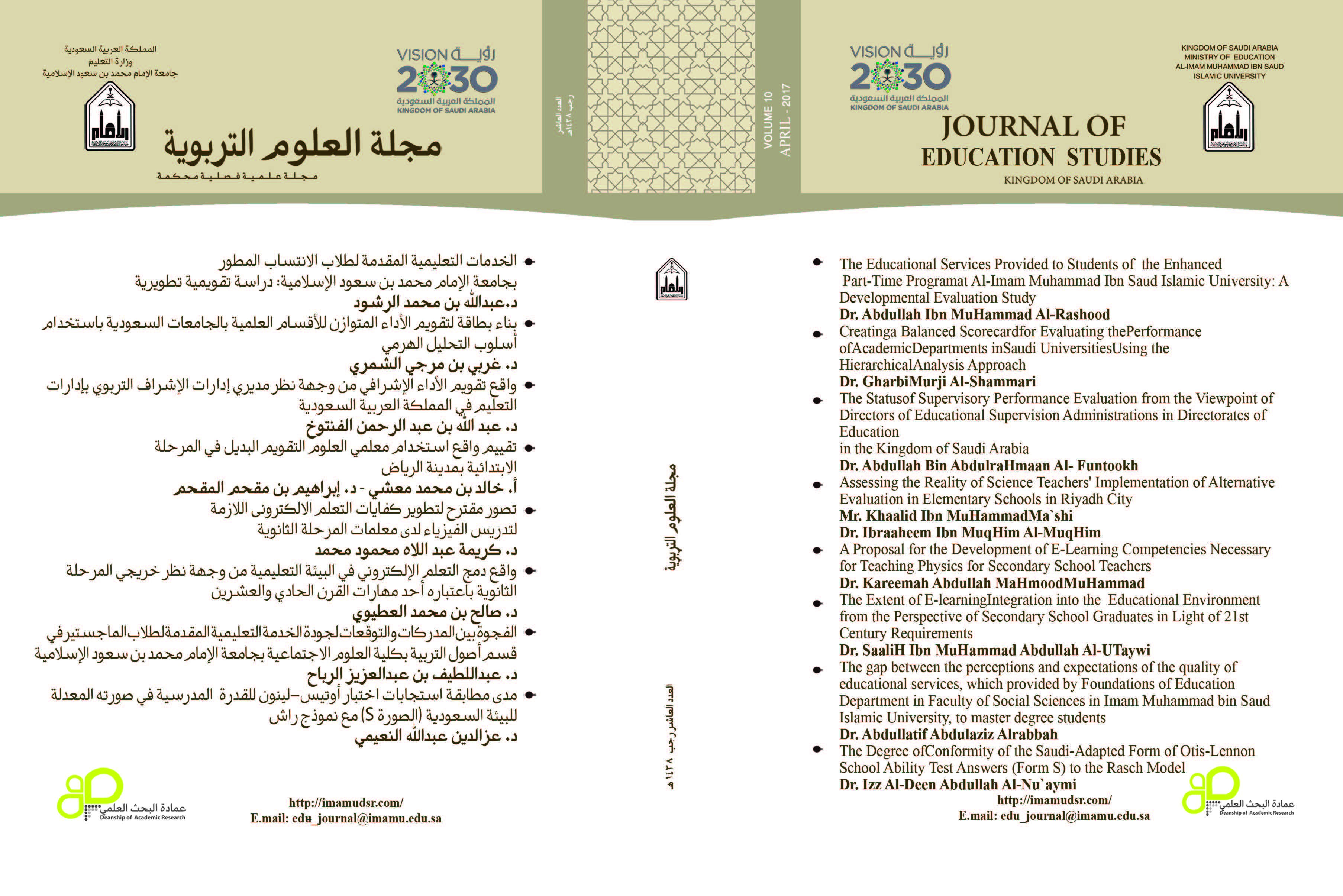واقع دمج التعلم الإلكتروني في البيئة التعليمية من وجهة نظر خريجي المرحلة الثانوية باعتباره أحد مهارات القرن الحادي والعشرين
الكلمات المفتاحية:
مهارات القرن الحادي والعشرين، التعلم الإلكتروني، تقنية المعلومات والاتصالات، الدمج.الملخص
تعتبر تقنية المعلومات والاتصالات العمود الفقري للتعلم الإلكتروني من خلال الابتكارات الحديثة والمستمرة التي لها مساهمات متنوعة في تعزيز بيئات التعلم. لقد سعى البحث إلى الإجابة عن السؤال5: الرئيس: ما واقع دمج التعلم الإلكتروني في البيئة التعليمية من وجهة نظر خريجي الثانوية (طلاب وطالبات) الذين يدرسون في السنة التحضيرية بجامعة المجمعة باعتباره أحد مهارات القرن الحادي والعشرين؟ وشمل مجتمع البحث جميع الطلاب والطالبات (541)، وكان عدد الطلاب والطالبات على التوالي (372)، (169) والذين درسوا في السنة التحضرية في بداية الفصل الأول من العام الجامعي 1433/1434ه، وتم استخدام الاستبانة لجمع البيانات، وكان عدد الاستبانات الصالحة للتحليل (454) منها(278) تمثل الطلاب، و(167) تمثل الطالبات. واستخُدم المنهج الكمي التحليلي لمعرفة المتوسطات الحسابية والانحرافات المعيارية، واختبار (ت) لمعرفة إذا كان هناك فروق ذات دلالة إحصائية بين متوسطات مجتمع البحث (الطلاب والطالبات) نحو المقررات الأكثر دمجاً للتعلم الإلكتروني، واستخدام الطلاب والطالبات التعلم الإلكتروني في البيئة التعليمية، واستخدام المعلمين والمعلمات للتعلم الإلكتروني في البيئة التعليمية، ودمج التعلم الإلكتروني في أنشطة دروس المحتوى، وأكدت النتائج أن هناك فروق ذات دلالة إحصائية لصالح الطالبات؛ ولكن بصورة عامة تؤكد النتائج أن هناك ضعف في دمج التعلم الإلكتروني في المقررات كل على حدة. أو استخدامها بواسطة المعلمين والمعلمات، والطلاب والطالبات في بيئات التعلم، أو دمجها في أنشطة المحتوى، وبما أنها تعتبر من مقومات القرن الحادي والعشرين يفترض أن تسعى وزارة التعليم وإدارة المدارس لتبني استراتيجية واضحة تحث المعلمين والمعلمات والطلاب والطالبات على اكتساب مهارات التعلم الإلكتروني بواسطة ورش العمل المتنوعة والتدريب؛ لضمان المخرجات التي تحقق متطلبات بيئات الأعمال وتمكنهم من المنافسة في ضوء المتغيرات المتنوعة.




